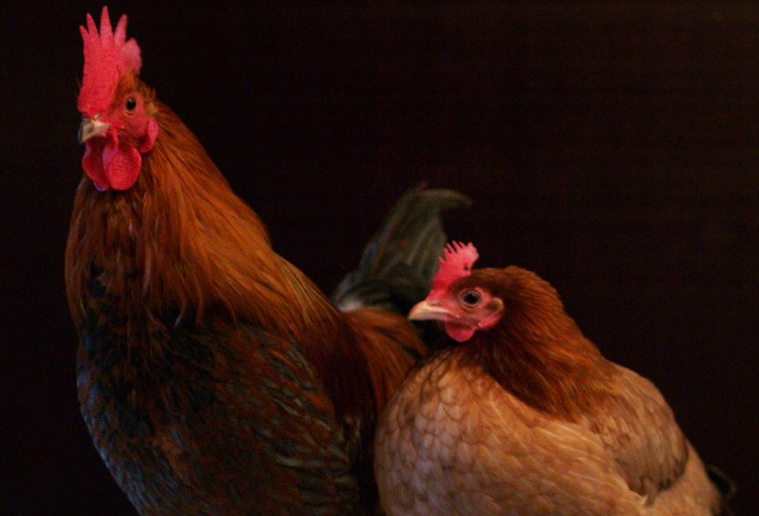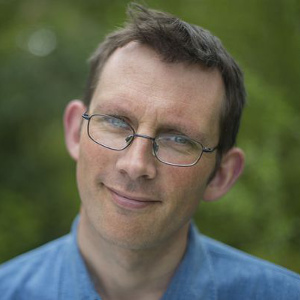In ‘From What Is to What If’, I suggest that we are living in a time in which our collective imagination, our ability to, as John Dewey put it, “see things as if they could be otherwise”, is in decline. I also raised the idea, first suggested by Henry Giroux, that we are living in a time of a ‘Disimagination Machine’ that systematically undermines and erodes the capacity of a population to lead lives with active and healthy imaginations. The events of recent months have confirmed for me how dangerous a situation this has created. Those chickens of imagination have come home to roost. In ‘What If’ I wrote:
“We recognise that if a population isn’t sufficiently nourished, we will see a decline in health and a rise in preventable illnesses. We recognise that if we fail to give a population a good education, it will fail to reach its potential. Yet the neglect of the imagination is generally overlooked, seen as a frivolous distraction from the overarching aim of building economic growth and technological progress”.
Is it really so hard to imagine a world in which fossil fuel companies no longer exist? Is it really such a struggle to imagine a world in which people of colour don’t need to fear for their lives when heading out to do things their white counterparts take completely for granted? Is it so impossible to imagine a world without homelessness? Why is the idea that policing happens in a very different way to how it happens at the moment so far beyond what many people feel is imaginable?
Why do we struggle so much to imagine that food production, transport, the economy, education, everything, could happen very differently to the present? We seem to be stuck in ruts, ruts that don’t work or meet most peoples’ needs, because we have lost the ability to imagine that there might be life beyond those ruts, rather than embracing the possibilities that these times have to offer.
We are led by people who failed to have the capacity to imagine the possibility that a pandemic already happening elsewhere in the world might actually arrive on their own shores. They were unable to imagine that it might spread with the same vigour it had shown there. They failed to imagine that they needed to do anything to prepare. They failed to imagine that working people might actually need a decent level of protection in order to carry on working. And now they are failing to imagine that once it’s over, we could do anything other than try as hard as possible to go back to how things were before.
We are also seeing a Black Lives Matter revolution, which has unleashed some deeply powerful What If questions into the world, as well as a new injection of possibility. “What if there were no police?” “What if we invested money into black communities rather than into the criminal justice system?” I loved this video from the Black Visions Collective, which includes a chant where after each line, the rest of the group respond with “Imagine”….
“Imagine if communities were built for us, and by us. Imagine a world where education is free for all. Imagine our bodies not used as currency on the fields, in prison, or at war. Imagine a police-free world. Imagine a world where queer and trans black folks live freely. Imagine a world where there’s a roof over every head, and sustenance for everybody. Imagine a world where black children can be children, where they can dream big, and live full, healthy lives”.
The corrosion of our collective imagination has been going on for a long time. It turned out, as I researched the book, that in fact there were plenty of people who had been warning for decades that we were ignoring the imagination at our peril. Writing in 1958, William Walsh warned:
“Meanness of understanding, ugliness of milieu, the attitudes of the robot, these are the characteristics of an age suffering from an anemia of the imagination, the organ most vividly and ultimately concerned with life”.
Educationalist Ruth Mock, writing in 1970, wrote that “we have lost the solitude in which our imaginative self can mature, and therefore we cannot create the constructive community life from which we can confidently withdraw to fruitful solitude”. In 2010, researcher Kyung Hee Kim showed how imagination and creativity had been in decline since the mid 1990s.
In 2015, literary reviewer Sven Birkerts wrote that “we are losing the very paradigm of depth”. In his 2016 book, Creative Schools, Sir Ken Robinson wrote “if you design a system to do something specific, don’t be surprised if it does it. If you run an education system based on standardisation and conformity that suppresses individuality, imagination and creativity, don’t be surprised if that’s what it does”. We could add so many things to that list. Leah Stella Stephens wrote in 2017, “who has the time or space to hear the barely audible whispers from our long-neglected imaginations? Our imaginations are banished during the day, locked in our internal jails, only to fleetingly emerge at night, if we are lucky“.

The Disimagination Machine is complex, multi-faceted, deeply pervasive and continually reinventing itself. The Portugese musician Whalt Thisne describes it as:
“… both a set of cultural apparatuses extending from schools and mainstream media to the new sites of screen culture, and a public pedagogy that functions primarily to undermine the ability of individuals to think critically, imagine the unimaginable, and engage in thoughtful and critical dialogue: put simply, to become critically informed citizens of the world.”
Its chief weapons are the cultivation of trauma, anxiety, inequality and isolation. It has created an education system that has downvalued the imagination to the extent that it barely features in most kids’ educational experience. Our time for daydreaming has been stolen by our smartphones. We spend less and less time outdoors.
Social media has put us into bubbles where we listen only to people like us and lose the ability to imagine ourselves in the shoes of people who don’t agree with us. Could it be that our entire economic system is, in fact, designed to contract and extinguish our ability to imagine alternatives, that capitalism itself is a Disimagination Machine? Max Haiven writes:
“Capitalism relies not only on the brutal repression of workers in factories and fields: it also relies on conscripting our imaginations. On a basic level, it relies on each of us imagining ourselves as essentially isolated, lonely, competitive economic agents. It relies on us imagining that the system is the natural expression of human nature, or that it is too powerful to be changed, or that no other system could ever be desirable. On a broad level, it works by transforming what we imagine is valuable in ways that see us orient our actions towards activities that will reproduce the status quo”.
Our attention spans have contracted, leaving us less able to sustain the kinds of thinking and imagining that complexity demands of us. And then of course, there are the impacts of racial inequality and colonisation on the imagination. As the brilliant futurist Adrienne Maree Brown put it in her 2017 book ‘Emergent Strategy‘:
“Imagination is one of the spoils of colonization, which in many ways is claiming who gets to imagine the future for a given geography. Losing our imagination is a symptom of trauma. Reclaiming the right to dream the future, strengthening the muscle to imagine together as Black people, is a revolutionary decolonizing activity. We are living in the ancestral imagination of others, with their longing for safety and abundance, a longing that didn’t include us…We are living now inside the imagination of people who thought economic disparity and environmental destruction were acceptable costs for their power. It is our right and responsibility to write ourselves into the future”.
So we arrive in 2020, reaping the results of decades of down valuing, sidelining and undermining the imagination. The potential rewards that would emerge from letting the imagination loose are incalculable, but instead we keep it locked in tall tower, protected by the dragon of disimagination. What would it look like if we were to set it free?
We are seeing a big upsurge in what Corinna Burkhart, Nina Treu and Matthias Schmelzer call the ‘mosaic of alternatives’. “After decades on the defensive, the left has once again started to embrace positive visions of the future” they write. The movements and initiatives they write about have much in common, but one key thing is that they open up possibilities, they evoke ‘What If’, they invite and nurture the imagination. Reflecting recently on the sense of renewed hope that Black Lives Matter has given him, David Bollier wrote:
“Since the state is so entangled in its deep alliance with capital, the real energy and thought for structural change will not likely be coming from within those circle or traditional politics. It can only come from us – commoners and care workers, families and communities, water protectors and Indigenous peoples, and all others whose fates have not been captured or co-opted by the established, dysfunctional system”.
Some of the clues as to how we might intentionally do that, and how we might put the revival of the imagination at its heart, can be found in a quite delightful recent publication from the brilliant Cambridge Curiosity and Imagination (CCI). They are one of the stories told in ‘From What Is…” and I love their work. They just published a booklet called ‘Artscapers: being and becoming creative’, which I had the honour to write to foreword for.
In it, they share a manifesto created by the kids, parents and educators of Mayfield Primary School, which set out how they wanted to be in the world, how they planned to unlock the school’s imagination and creativity. Here it is:
- Be free
- Imagine anything
- Have fun
- Know anyone can do it, there are no wrong answers
- Share and talk
- Not rush
- Try things out and experiment – make a mess
- See that art is everywhere
- Keep trying
- Move around, be comfortable
- Be brave and trust.
It is as good a manifesto for rebuilding a post-COVID, post carbon, post-colonial, more delightful and connected world as I’ve seen anywhere. Oh, and it’s also a pretty wonderful set of guidelines for rethinking education. It’s time for a revolution of the imagination. And it starts here.
Teaser photo credit: By Andrei Niemimäki from Turku, Finland – Friends, CC BY-SA 2.0






